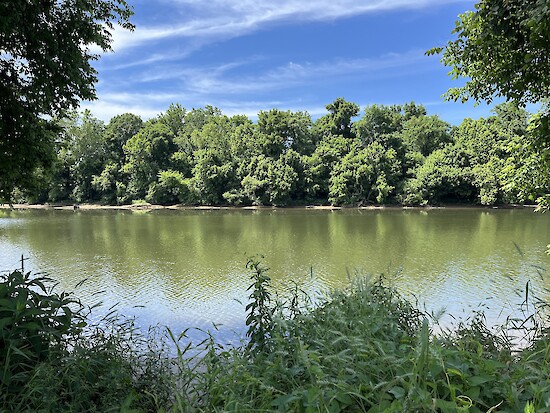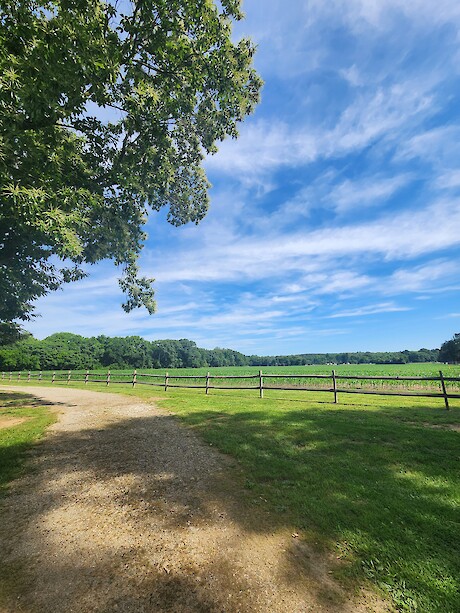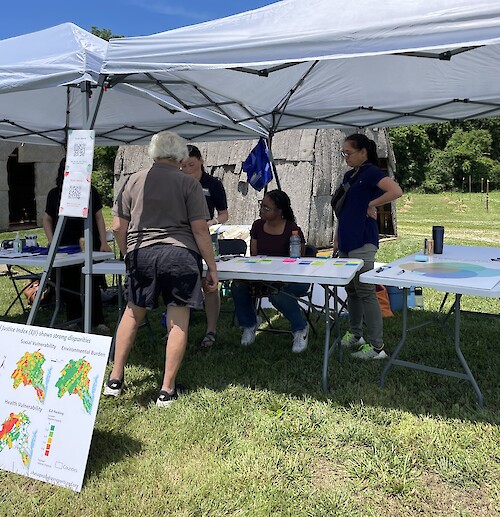A Listening Session Right off the Rappahannock River!
Kameryn Overton ·The sun was high and unblocked by clouds as environmental groups gathered for the 2024 Community Agriculture Outreach Day in partnership with the Patawomeck Tribe of Virginia. Around 10 tables were arranged on the tribal center’s lawn in Fredericksburg, Virginia. Participating organizations included the Tri-County Soil and Water Conservation Trust, the Northern Virginia Conservation Trust, and the Rivere Research Education and Technology Institute. All groups gathered here for one reason: to engage with the agricultural community and hear about their experiences and difficulties.
The Patawomeck Tribal Center was the perfect setting for this agriculture-focused event. A Three Sisters field (squash, maize, and beans) grew behind us, the Rappahannock River flowed in front, and the largest Ginkgo Biloba tree in Virginia stood tall to our side. Around us were monuments of the Patawomeck Tribe, reminding us of the deep history of the land and agriculture in Fredericksburg.


We were excited to see what we could learn from the Virginia agricultural community! My station focused on the stakeholders' social networks. At this station, we aim to determine and measure the relationships between people within an area. We asked them questions about their connection to agriculture, what they want to know more about, what they wish others knew more about, and who they think should be involved in promoting positive change.

The questions at my station brought about great conversation and insights. I learned about producers' efforts to reduce water pollution, the difficulties of new land ownership, public misconceptions about farmers, and the diversity of agriculture careers that can involve college degrees. Many community members are concerned about consumers not knowing how their food gets to the grocery store. One member shared an idea that all students should have some sort of class (or classes) about agriculture, whether in the form of cooking or learning how to do business math. In my interactions with the community, I saw a common theme of disconnect between the general public and the beginning stages of the food system, or agriculture. The community wants people to understand that without farms and producers, grocery stores would be empty!

The community we engaged with included members from local government agencies, producers, consumers, and educators. From these local conversations, we can better understand what is most important to the agricultural community. This knowledge is used to create indicators for future report cards. Including this information gives the report cards a more holistic view! Simultaneously, those who work in and around agriculture will be recognized and highlighted for their important roles in the maintenance of the Chesapeake Bay’s health and conservation.

Feeling full of inspiration and hope for future report cards, we prepared to leave the event, but of course, not without one final interesting experience!

About the author
Kameryn Overton

Kameryn Overotn is a recent graduate of Tuskegee University where she studied environmental science. She is currently interning with the UMCES IAN office as a Global Sustainability Scholar.

